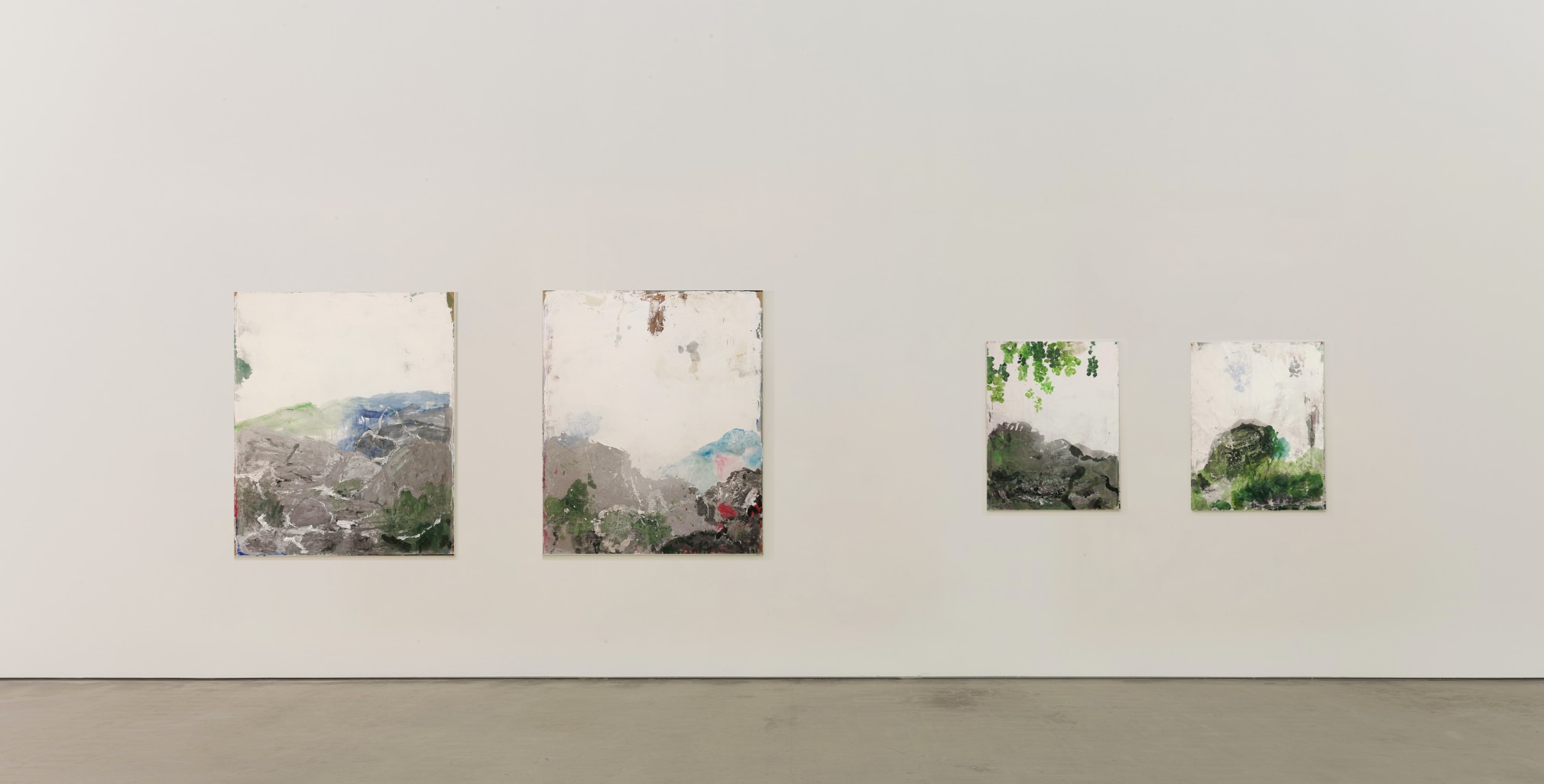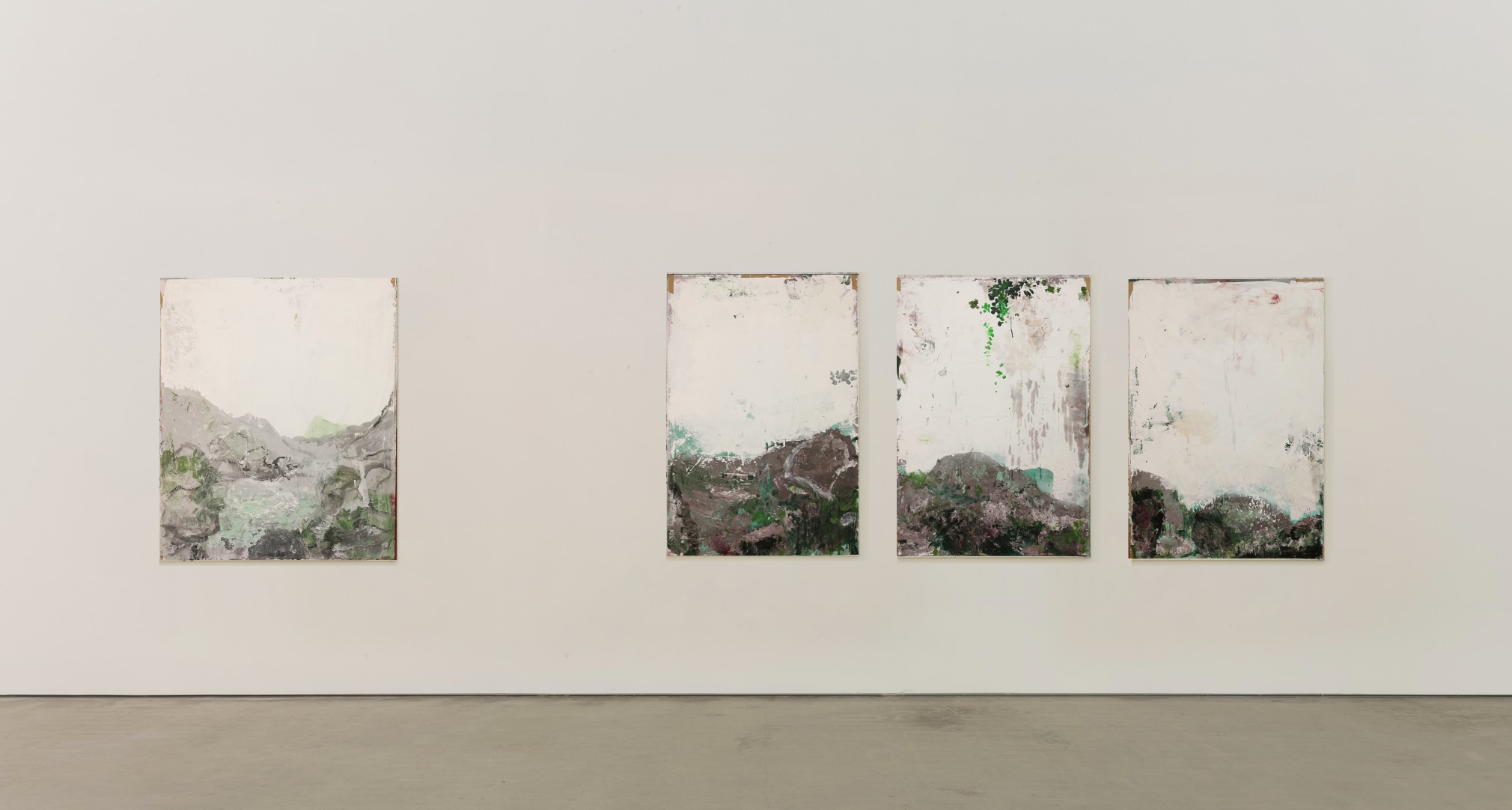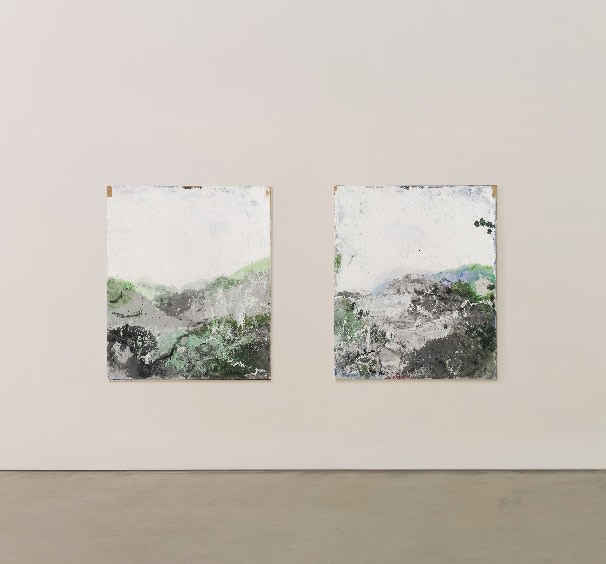Chambers Fine Art is pleased to announce the opening on September 24, 2020 of Yan Shanchun: Fuchun. Born in 1957 in Hangzhou, Yan graduated from the Printmaking Department of the Zhejiang Academy of Fine Arts (now China Academy of Fine Arts) in 1982, and thus belongs to the generation of artists who were the first to graduate after the academies were closed during the Cultural Revolution (1966-1976).
Yan’s career has followed an unusual path. For a decade after joining the staff of the Shenzhen Fine Arts Institute in 1993, he devoted most of his time to scholarly pursuits, only returning to painting in 2005. Since 2010, however, he has simultaneously explored the imagery of West Lake in Hangzhou and the surrounding locales in paintings and etchings. The current exhibition, which will be featured exclusively on the ADAA Member Viewing Rooms, focuses on his series Fuchun, the name of an area near Hangzhou that was the subject of several generations of important traditional Chinese ink painters. He presents the series in the form of small scale ‘albums’, resembling the open pages of an elaborate sketchbook, and large paintings on canvas. There is a fascinating dialog between the two, which are inspired by the same subject matter although totally different in scale and impact.
Yan first began developing his Fuchun series 10 years ago, but it is only since 2016 that he found a consistent approach to this body of work that sets it apart from his longstanding West Lake series. “West Lake can be regarded as a transformation of my childhood experience with artistic methods. Its inspiration is a kind of memory, which is visual and even physical memory. Fuchun is a bit different. At first, it was more a product of ideology. Many literati have eulogized the mountains and rivers along the Fuchun River since ancient times. But its reputation in art history can be traced to Huang Gongwang's painting Dwelling in the Fuchun Mountains.”
Dwelling in the Fuchun Mountains is considered one of the greatest surviving masterpieces by the highly acclaimed Chinese painter Huang Gongwang (1269–1354). Yan Shanchun’s first encounter with the famous work came when he enrolled at the China Academy of Art in Hangzhou, and it left a lasting impression on him. Having been trained in ‘Western’ techniques including the use of perspective, volume, light and shadow, he was surprised to find that the scenes that were depicted in Huang Gongwang’s work were very different from the actual scenery along the Fuchun River, with various points of perspective and focal points according to what the artist felt was important. Rather than being strictly representational, there was a distinctly personal feeling and emotion to the work that Yan found appealing, and he began to look for ways to incorporate this idea into his own work.
Located just south of Hanghzou, the Fuchun river is flanked by low-lying mountains on either side, and the landscape is green and lush. On sketching trips to the Fuchun region, Yan felt a visceral response to the soil in particular – it was the type of fertile earth that reminded him of the years that he, like many others of his generation, spent learning to farm in the countryside during the Cultural Revolution.
He has described how his “feelings towards the scenery around the Fuchun region had nothing to do with painting at first. When I worked as a farmer I had experienced a kind of intimate personal "communication" with the soil. Therefore, whenever I see the scenery around Fuchun, it always triggers a strong emotional response in me.” Seeking to capture this emotional response while portraying the physical attributes of the landscape within his Fuchun series, Yan built upon the techniques that he had developed for the West Lake series over the last two decades. In the West Lake series of paintings it was almost as if Yan wanted to draw a veil over his working process, presenting the viewer with mysterious evocations of a vanished past. With Fuchun he has the opposite intention:
“Around 2015, I gradually began to try to use comprehensive materials, using gypsum powder and latex to build the thickness of the “soil” on the picture. The density and texture of this type of material are very close to the subject matter of the paintings. It is heavier than ink and more breathable than oil painting… In the past when I painted “West Lake” I also used this method although in order to achieve the subtle effects I found in murals I repeatedly polished the surface until it was as flat as possible. Therefore, the texture of the picture was more of an illusion; an indirect, rather than direct presentation of materials. With Fuchun, you can clearly see the unevenness of the material, which is different from the sense of transparency pursued in West Lake. This is to express a sense of weight.”
Yan is well versed in ink painting as well as classic Chinese poetry which aim not to describe but to evoke through carefully observed details. That being said, he wears his learning lightly and his Fuchun paintings and studies are memorable for the manner in which they reveal so much while remaining self-effacing and reticent. Although Yan is fully cognizant of the long history of abstract painting in the West, he has been less concerned with rivaling these antecedents than in modifying their example to enrich the valued tradition of Chinese literati who cultivated the arts of calligraphy, painting and poetry in seclusion. That privileged life-style is no longer possible but in his detachment from the goal-oriented atmosphere of the contemporary art world and in the development of his own quiet poetic sensibility equally attuned to poetry and the visual arts, he may be considered a twenty-first century equivalent of these legendary polymaths.



